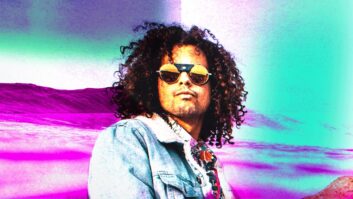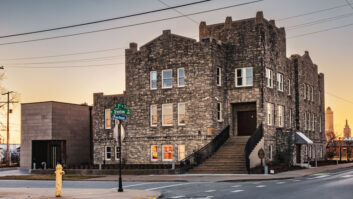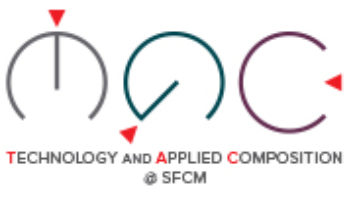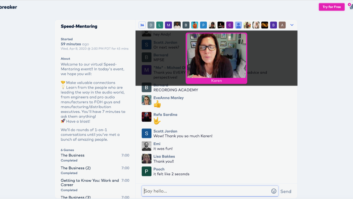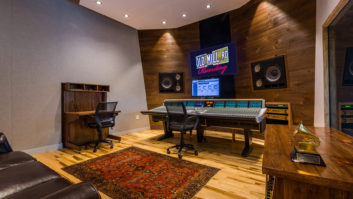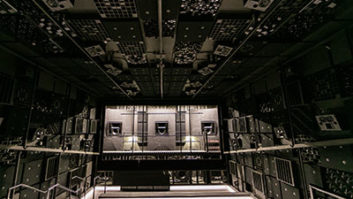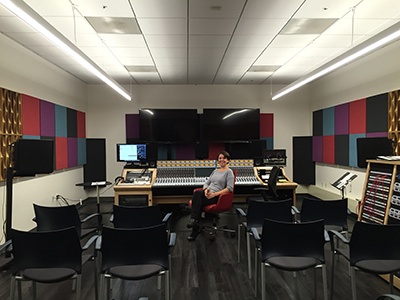
Founded in 1917 and incorporated in 1923, the San Francisco Conservatory of Music (SFCM) has educated generations of top-caliber classical musicians from around the world, offering instruction in orchestral instruments, theory, composition and voice. Long part of the cultural heart of San Francisco, the institution built a reputation for excellence early in its history and helped to launch the careers of such distinguished alumni as violinists Yehudi Menuhin and Isaac Stern, conductor/pianist Jeffrey Kahane, guitarist/composer Julian Lage, composer Aaron Jay Kernis, pianist/composer George Duke, and guitarists Andrew Hull and David Tanenbaum, who currently serves on the faculty.
SFCM began a new chapter in 2006, when the school relocated across the city from 1201 Ortega Street in the Sunset District in the western part of town, where it had resided since 1956, to its present location at 50 Oak Street in the Civic Center. In its new location, SFCM became part of a newly forming, centrally located performing arts district in the immediate neighborhood that includes Davies Symphony Hall, War Memorial Opera House, and SFJAZZ Center, which opened in 2013. SFCM renovated and refurbished the 1914 structure, which at one time housed a YMCA with a swimming pool, and includes a ballroom that SFCM worked to preserve and incorporate into its new facilities.
On July 1, 2013, David H. Stull, who was Dean at the Oberlin Conservatory of Music in Ohio, became president of the oldest conservatory on the West Coast and brought with him a strategic vision for the future. As the Dean at Oberlin, Stull oversaw the development of a state-of-the-art recording studio and record label. Part of his mission for SFCM involved initiating a new curriculum and degree program in music technology for composers, as well as building top-notch audio facilities into the classrooms in the basement of 50 Oak Street for the program and other conservatory students and faculty.
This fall, SFCM welcomed its first class of 15 students enrolled in a new undergraduate degree program: Technology and Applied Composition (TAC). The curriculum integrates an education in music composition with an education in music and audio technology. TAC students learn recording, sound design, and film and videogame scoring under the direction of SFCM’s in-house faculty and visiting faculty from the film and game music industries, including Leslie Ann Jones (Skywalker Sound), Jeff Beal (House of Cards), Dren McDonald (Transformers), Austin Wintory (PlayStation 3’s Journey), among others. TAC is sponsored and supported by sE Electronics, Meyer Sound, Rupert Neve Designs, and Electronic Arts.
When Stull was appointed as SFCM president, he invited his colleague from the faculty at Oberlin, composer/musician MaryClare Brzytwa, to join the SFCM faculty and develop the TAC program’s curriculum, design its studio spaces, select and purchase new audio gear, and teach.
“He said, ‘I’ve got a job out here for you,’” Brzytwa recalls. “‘How’d you like to pick out some music technology toys?’ And I said, ‘Yeah!’ [Laughs.] It was a big job. We had to get the program voted on by the faculty. We had to go through a whole process where it was a committee voting on building the studios. Then we had to get the curriculum approved, course-by-course, with the committee. That took about a year. And while we were doing that I was also planning these studios; that took another year. And then in the summer [of 2014] we actually began installing and integrating the equipment.
“It’s really educational for the students to be creative and experiment with different recording techniques and scenarios,” says Brzytwa, who is Associate Dean of New Media and Music Technology, and Chair of TAC. “They’re artists first, and technicians second. But we’re treating the technology very rigorously. We’re setting the bar pretty high! [Laughs] They seem to be enjoying it so far. If they have to work with a programmer as a composer, they’ll have a shared vocabulary, and not be bogged down by trying to understand the technology.
“All of us teaching in TAC are musicians,” Brzytwa says. “Jason [O’Connell, Director of Conservatory Recording Services] is a violinist and a violist; I’m a flutist. So we’re coming from a place that has a deep passion for music. Recording is part of the compositional process for our students in 2015. Learning to record, learning to use sample libraries, learning to mix—all of those things come together to make a craft and an art.”
Brzytwa points out that electronic music has long been present at SFCM, dating back to the 1960s, when it was a “hotbed of experimentation,” presenting its Sonic Series of concerts featuring artists such as composer Terry Riley. Former composition professor Alden Jenks was director of the SFCM’s Electronic Music Studio for approximately 40 years. Under the TAC initiative, Brzytwa and O’Connell, who joined SFCM in 2007, revamped and greatly expanded upon the foundation that Jenks had established. They have also preserved Jenks’ contributions and legacy at SFCM, including an oral history project and restoring some vintage gear that Jenks brought in.

“When I got here it was mainly a performance school,” O’Connell says. “My job was to capture concerts, and I would train the students on how to do it. Outside of [Jenks’] class, it was the only [opportunity] that students had to use microphones or computers, or anything. It’s exciting, the frontier, being a founding member of this program.”
Brzytwa oversaw the construction of integrated audio facilities over three months in 2014. She notes that, fortuitously, the basement rooms constructed prior to SFCM’s 2006 move-in were already floating, in anticipation of expanding the school’s music technology offerings.
“Jason and I decided on [installing] the Rupert Neve Designs 5088 [32-channel analog console], and that dictated the rest of the infrastructure of the rooms,” she says, “figuring out how much room we had to run pipe in the ceiling, because it’s pretty full already and we had to patch these rooms. We had to add audio tielines throughout the building and network it all. We decided to go with a MADI system to save some space in the ceiling, and that’s worked out really well because we have this portable cart now that we can take into any of the halls, and it gives us a lot more capabilities to send back and forth and listen without latency. All of the cables for the whole [facility] were perfectly measured, all created right here in-house.”
Taurin Barrera, Director of TAC Studios, joined the program as construction took place. “I started out coordinating all these different parties: facilities, IT, security, and making sure that everything was going according to plan,” Barrera says. “It was a bit tricky to integrate these state-of-the-art modern systems with some of our more aged infrastructure. This [program] is a new angle for the conservatory to take. Here we are building what appears to be this monolith of technology in the basement. I think a lot of the other members of the SFCM community were really intrigued but also wondering, ‘What are they doing down there?’”
TAC studio facilities comprise Studio A, which is networked to all three of the conservatory’s halls and a Live Room, built around the Neve console and featuring a Meyer Sound HD 5.1 monitoring system and Galileo DSP; Studio B, a project room with a full complement of hardware and software synths, and sound libraries; the flexible Live or “improvisation” room; and a Digital Audio Keyboard Lab with 14 preconfigured Mac-based workstations (Pro Tools, Logic Pro X, Final Cut Pro, Sibelius, and more).
“A lot of the music technology ends up speaking for itself,” Barrera says. “We’re putting new ideas, tools and concepts out in front of people, and you instantly see that this person is really going to dive in.”
Brzytwa, Barrera and O’Connell all point out that the TAC program and its facilities are piquing the interest of SFCM faculty in other departments. “Some faculty have never done anything in this realm [using technology], and all of a sudden they’re starting to do new and crazy things,” O’Connell says with a laugh. “And hopefully they’re going to encourage their students to take classes with us. That’s been our approach to winning over the school.”
O’Connell also oversees a work-study program: “We hire the students from the classes to work as recording engineers for pay,” O’Connell says. “They get to work with me and Taurin, and we do 500 recordings a year for concerts, and we have all these recording sessions we do. We also record the orchestra and the opera. We do the live sound for all the concerts, the A/V for all the classrooms, and assist all the faculty.”
“We’re trying to create students who are well educated, productive, contributing members of society who engage in the arts [and have] a broad set of skills that are taught very well, at the highest level with the best possible resources and equipment,” Brzytwa concludes. “I think we’re getting there. If our students go out and they do a bunch of different jobs, and they’re all successfully employed in some field related to the arts or to technology or to science, I think I will feel very successful.”
